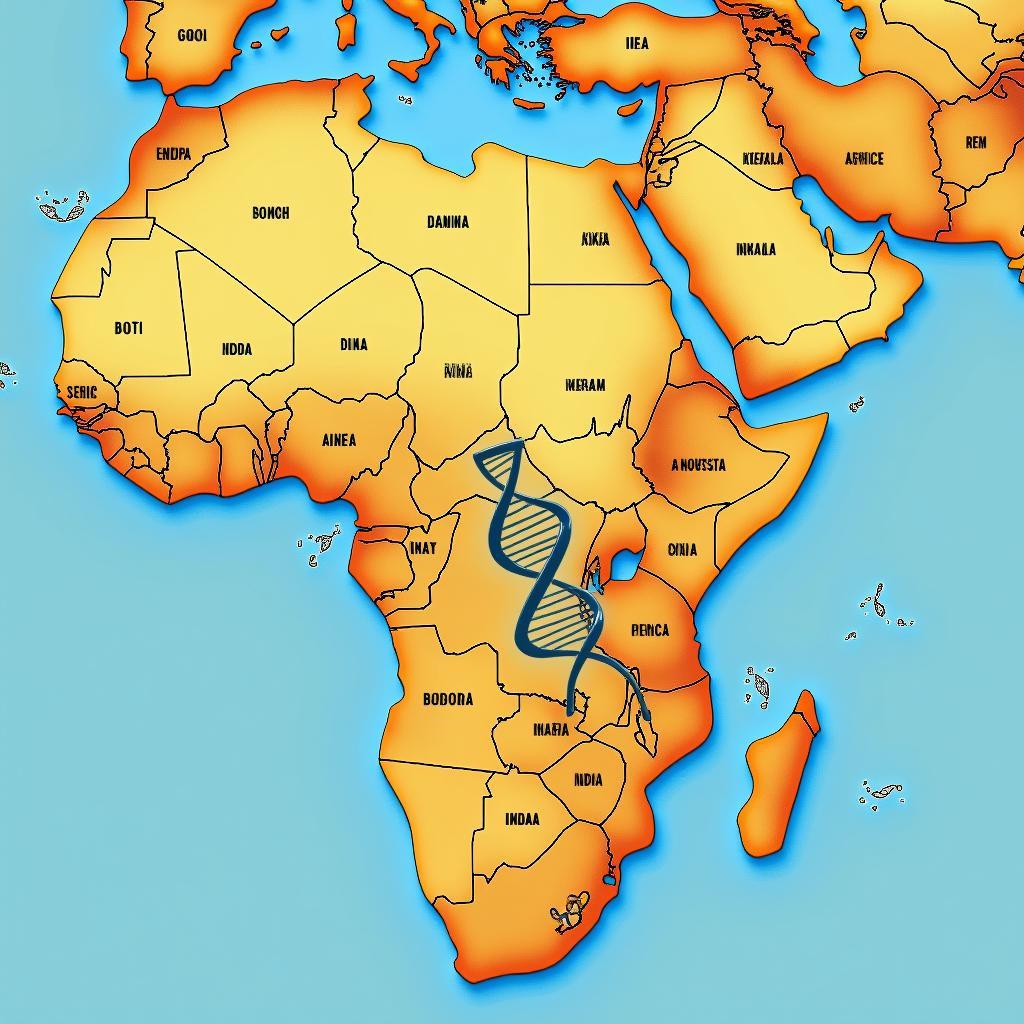Unraveling the Mystery: African Gene Similar in Kerala
The intriguing connection between African genes and those found in Kerala, India, has sparked much curiosity. This article delves into the genetic similarities, historical migrations, and cultural exchanges that have shaped this fascinating link. We’ll explore the scientific evidence, historical narratives, and cultural influences that provide insights into this shared heritage.
The Genetic Thread Connecting Africa and Kerala
Genetic studies have revealed intriguing similarities between certain populations in Africa and Kerala. While not all Keralites share these genetic markers, specific communities exhibit a closer genetic affinity to African populations than other Indian groups. This raises questions about historical migrations and interactions between the two regions. Did ancient trade routes facilitate gene flow? Or were there other migratory patterns that contributed to this shared genetic heritage? One possible link involves the historical spice trade, which connected East Africa with the Malabar Coast of India, including Kerala, for centuries. It’s plausible that this trade not only facilitated the exchange of goods but also the movement of people and, consequently, genes. After this introduction, you might find it interesting to compare different cuisines. Check out this article about African Chapati vs Indian.
 African and Kerala Genetic Connections
African and Kerala Genetic Connections
Historical Migrations: Tracing the Footsteps of Shared Ancestry
The history of Kerala is interwoven with tales of maritime trade and cultural exchange. For millennia, Kerala’s ports were bustling hubs connecting the region with Africa, the Middle East, and beyond. This vibrant trade network fostered the exchange of goods, ideas, and cultures. It’s likely that these interactions also led to the migration of people, contributing to the genetic similarities observed today. The early arrival of Christianity and Islam in Kerala further strengthens the hypothesis of ancient connections with other parts of the world, including Africa.
Cultural Echoes: Exploring Shared Traditions and Practices
Beyond genetics, glimpses of shared cultural heritage can be observed in certain traditions and practices in Kerala. For instance, some musical forms and dance styles in Kerala bear resemblance to those found in parts of Africa. While not conclusive proof, these similarities hint at a possible historical connection that deserves further exploration. Are these just coincidences or remnants of a shared past? Examining these cultural parallels could offer valuable insights into the historical interactions between the two regions. This topic is quite complex, but it is interesting to consider the overall development of African countries. Learn more in this comparison of African countries’ HDI with Indian states.
What are the specific genetic markers shared between African and Kerala populations?
Specific genetic markers, such as certain Y-chromosome haplogroups and mitochondrial DNA lineages, are found at higher frequencies in both African and specific Kerala populations compared to other Indian groups. Further research is ongoing to pinpoint the precise origins and migratory patterns associated with these markers.
How did the spice trade influence the genetic exchange between Africa and Kerala?
The spice trade, spanning centuries, created a continuous flow of people and goods between East Africa and the Malabar Coast. This exchange likely facilitated intermingling and gene flow, contributing to the shared genetic heritage observed today. You can explore a variety of African produce in this article on African fruits and vegetables.
Are there other historical factors besides the spice trade that contributed to this genetic connection?
While the spice trade is a prominent factor, other potential contributors include earlier migrations, pre-colonial interactions, and the arrival of various religious groups.
Conclusion: A Tapestry of Shared History
The genetic similarities between populations in Africa and Kerala offer a captivating glimpse into a shared past. Further research into these genetic connections, coupled with historical and cultural analyses, promises to unravel more about the complex tapestry of human migration and interaction. Exploring this fascinating link deepens our understanding of both regions’ rich heritage and interconnectedness. The “African Gene Similar In Kerala” connection is a fascinating area of study that invites further exploration. It speaks to the interconnectedness of human populations and the rich history of cultural exchange. If you are interested in the African grey parrot, click here.
FAQ
- What is the primary evidence suggesting a genetic link between Africa and Kerala? Genetic studies have identified specific markers found in both populations.
- How did the spice trade contribute to this genetic connection? The spice trade facilitated the movement of people, likely leading to intermingling and gene flow.
- Are there any cultural similarities between Africa and Kerala? Certain musical forms and dance styles show resemblances, hinting at a possible historical connection.
- What further research is needed to understand this connection better? More comprehensive genetic studies and historical analyses are necessary.
- What is the significance of this genetic link? It highlights the interconnectedness of human populations and the complexities of human migration.
- Are all Keralites genetically similar to Africans? No, only certain communities in Kerala exhibit a closer genetic affinity to African populations.
- How long ago did this genetic exchange likely occur? The exact timeframe is still being researched, but it likely spans centuries.
Common Scenarios and Questions
- Scenario: A person of Keralite descent discovers they have African ancestry through a DNA test. Question: What historical factors might explain this finding?
- Scenario: A researcher is studying ancient trade routes. Question: How did these routes facilitate genetic exchange between different populations?
- Scenario: A student is learning about cultural diffusion. Question: What are some examples of cultural similarities that might suggest historical connections between different regions?
Further Exploration
For more information on related topics, consider exploring articles on African bullfrog eating chick.
Call to Action
When you need assistance, please contact us via Phone: +255768904061, Email: [email protected], or visit us at Mbarali DC Mawindi, Kangaga, Tanzania. Our customer service team is available 24/7.
